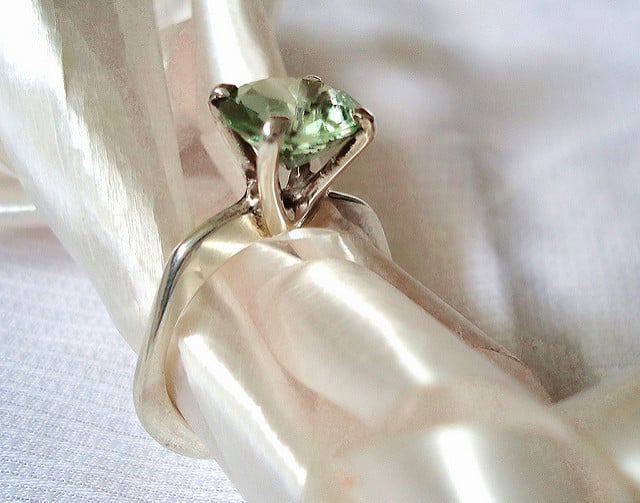Jewelry Nomenclature: Gem Rings
Though rings may come in many styles, gem cutters will regularly encounter a few common types of gem rings. Learn how to identify these popular designs.
2 Minute Read
Basic Terminology of Gem Rings
Some rings are made only of metal, such as a simple gold wedding band. Others feature gemstones or other decorations. Traditionally, rings are worn on the ring finger, which is the digit adjacent to your pinky. Now, people may wear rings on every finger, including the thumb.
Shanks
The basic component of a ring, the shank wraps around the finger. Ring shanks come in many styles, sizes, and shapes. Some have stones added, while others are made solely of metal.
Interested in this topic?
This article is also a part of our Professional Gemologist Certification Course, in the unit An Introduction to Gemology.
Ring Guards
Purchased separately, ring guards aren't part of actual rings. Fitted inside rings, their spring mechanisms open to allow people with arthritic or enlarged knuckles to pass rings over their fingers. Then, they tighten to fit securely and hold the rings in place.
Gem Ring Types
In this article, we'll focus on different types of gem rings and their parts.
While many types of rings are available today, gem cutters will likely encounter only a handful of types on a regular basis. Familiarize yourself with these gem rings and their settings. You'll then be better able to visualize them when reading a description or identify them in pictures without descriptions.
Solitaire Ring
Usually simple in style, a solitaire ring features a single large stone, typically bezel or prong mounted. Of course, solitaire gem rings with ornate bands and designs can be encountered. Diamond engagement rings are commonly solitaires. You can also find solitaire rings with other gemstones, including sapphires, emeralds, and tanzanites.
Cocktail Ring
Rarely simple in style, a cocktail ring usually features a large gemstone surrounded by smaller stones. The smaller stones may form a halo around the larger stone or groups on either side of the band. Cocktail rings can be made of precious metals and real gems or less expensive metals and faux stones, as is common in costume jewelry.
Pinky Ring
As the name implies, pinky fingers sport pinky rings. These rings appeal to both men and women because of their versatility. However, the designs differ significantly. On the one hand, men's pinky rings typically feature more metal with smaller gemstones, if any. On the other, women's pinky rings typically resemble gem rings worn on other fingers, though on a smaller scale. Alternatively, they may be all-metal rings with an attractive design.
Class Rings
These popular gem rings are worn to commemorate high school or college graduations. Usually, class rings feature a stone in the center, the school name around the stone, and designs engraved on either side. Designs may touch topics such as graduation years, majors, and activities. Based on wearers' preferences, jewelers can make class rings of precious metals and real gems or less expensive metals and simulated stones.
Ring Enhancer
Ring enhancers protect and showcase other rings. Commonly used as part of a wedding ring set, a ring enhancer is a ring with a gap in the middle, in which you place another ring, typically a diamond solitaire engagement ring. During the wedding ceremony, the groom slides the ring enhancer into place, completing the wedding band set. Thus, the bride can wear both her engagement and wedding rings on a daily basis.
International Gem Society
Related Articles
What is a Gem?
Bead and Necklace Size Charts
Standard Gem Sizes Chart: Guide to Gemstone Dimensions
Jewelry Nomenclature: Gem Earrings
Latest Articles
800 Years of Mogok: A Celebration in Tenuous Times
What is the Average Gemstone Faceting Yield?
Pyroxmangite Value, Price, and Jewelry Information
How to Identify Emerald Simulants and Synthetics
Never Stop Learning
When you join the IGS community, you get trusted diamond & gemstone information when you need it.
Get Gemology Insights
Get started with the International Gem Society’s free guide to gemstone identification. Join our weekly newsletter & get a free copy of the Gem ID Checklist!
